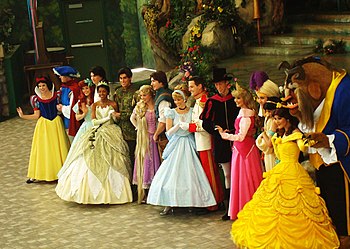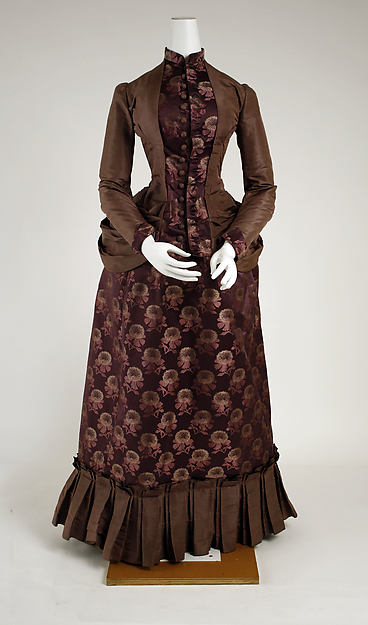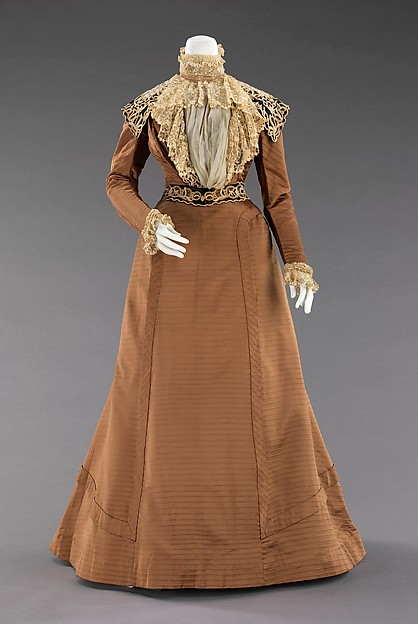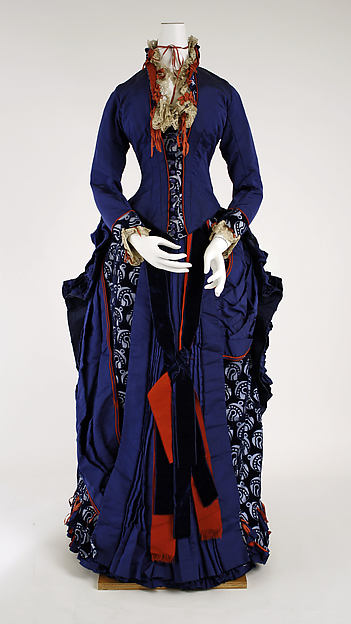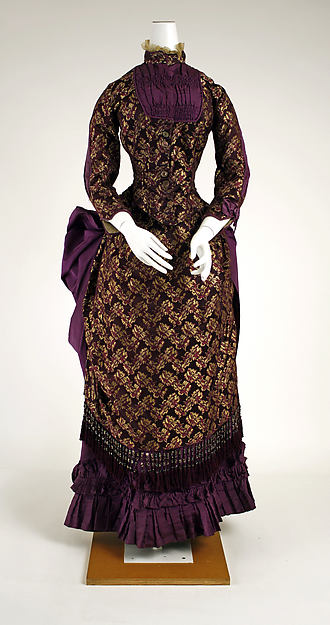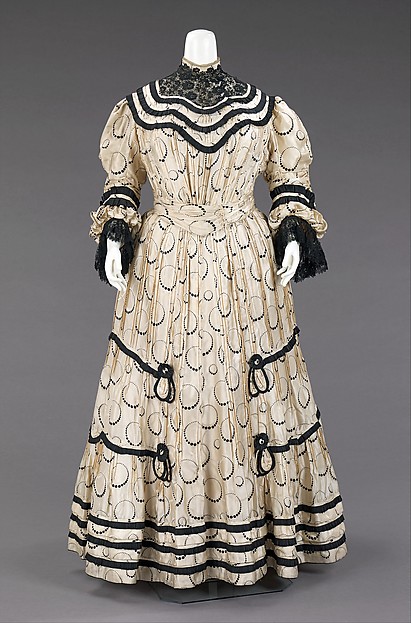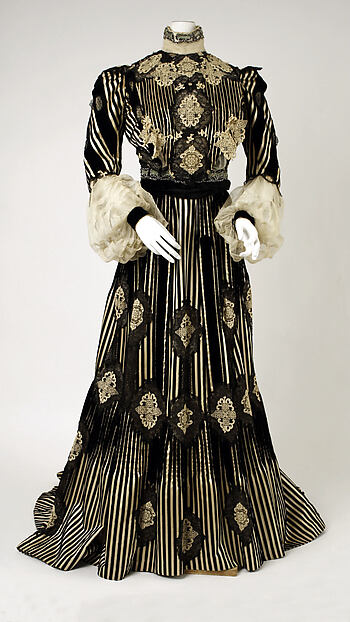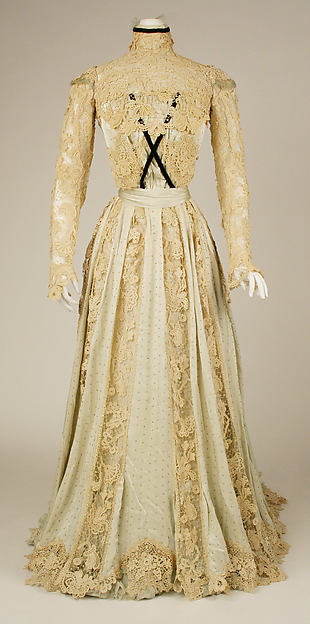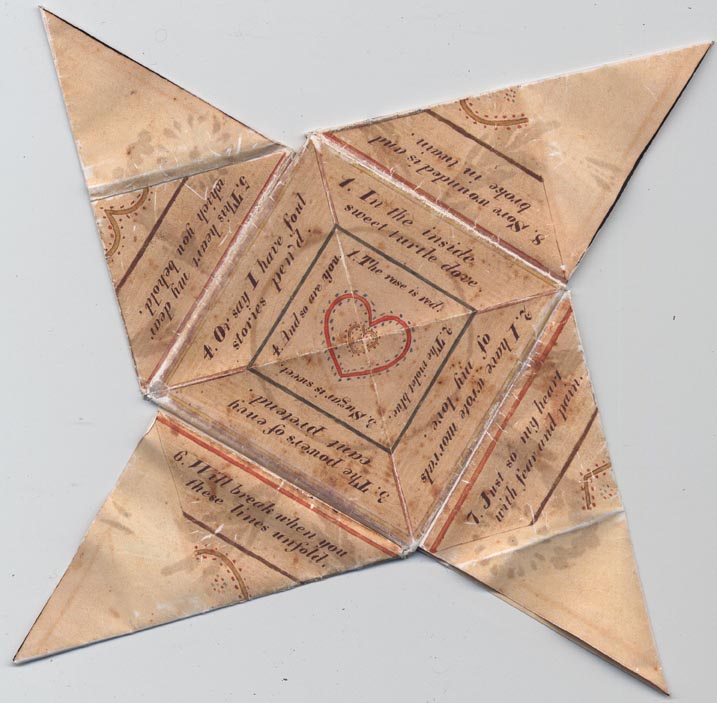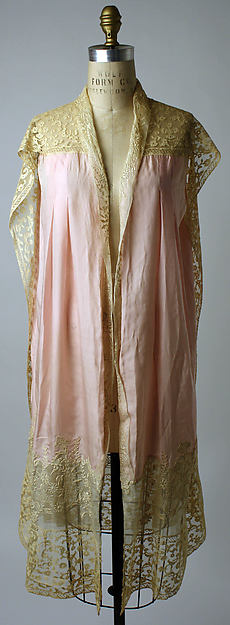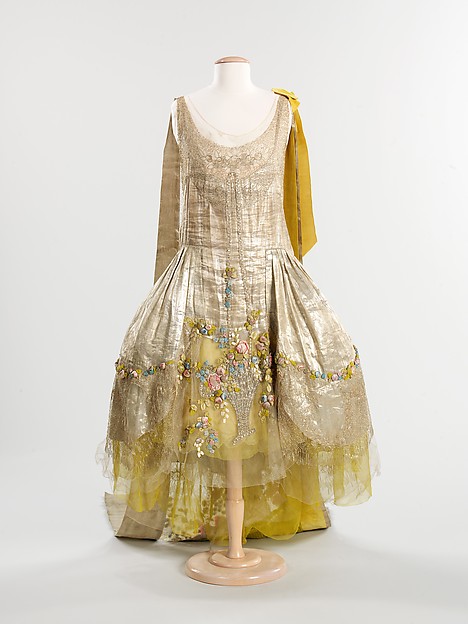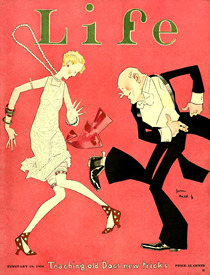
Lately, my passion for historic fashion has been torn between two decades...the
1820's and the 1920's. They really have nothing to do with each other, except the 20's part. The 1820's was awash with romanticism, frilliness and general pouffy-ness while the 1920's favored the geometric lines of neoclassicism associated today with
Art Deco. One could argue that in terms of fashion and cultural upheaval the 1920's and the
first French Empire (1804-15) had much in common...an embracing of neoclassicism and the relaxing of certain traditional mores. However, the 1820's was in large part a reaction to that earlier time and marked the beginning of a shift toward the repression of the Victorians and so has little in common with the roaring 1920's. I think I've mentioned before that I'm not the biggest fan of Victoria and her stifling influence on the western world. No offense, Victoria fans...but, in real life I highly doubt she was ever as cool as she is in episodes of
Doctor Who. Now, off my soapbox and onto what we started with...my two current obsessions...the 1820's and the 1920's. As I said, these two decades have little in common, but we all know material culture is not a monolith...we can point out the over-riding trends in fashion for a particular era, but it's never a good idea to rely on absolutes. For example, in blah, blah decade they never wore blah, blah print in blah, blah color...blah, blah. These trends and patterns can be helpful in understanding history, but they can also blind us to some really cool stuff. Case in point...a label by the name of
Boué Soeurs that was very popular in the 1920's despite an aesthetic that seemingly clashes with the idea of neoclassicism and clean lines as the "
bees knees" for this
lawless decade. In fact, Boué Soeurs made its name with over the top romanticism...they were shabby chic before it was cool (if it ever was cool that is). Their line along with a handful of other designers, such as
Callot Soeurs,
Lucile and
Jeanne Lanvin rebelled against the androgynous and cubist lines of the day to achieve a truly feminine and graceful silhouette.
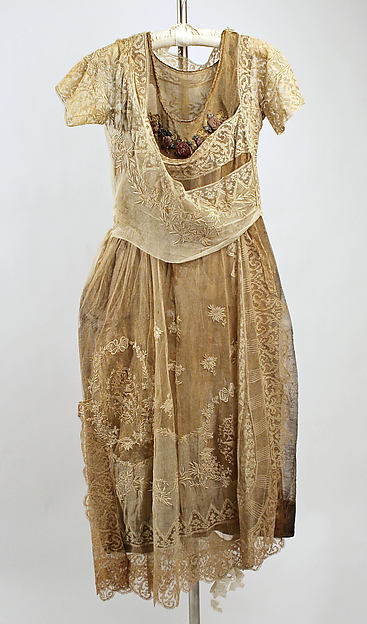 |
1918-1920
MET Museum |

The Boué Soeurs line was created by two sisters, Madame Sylvie Montégut and Baroness Jeanne d'Etreillis, who titled the label after their maiden name of Boué. According to Jeanne in an article from
Arts and Decoration (Vol. 16-17, 1922) the sisters began their career by dressing dolls in the fashionable modes of the day and eventually opened their flagship store at 9 Rue de la Paix. Jeanne stated that "we were content only when we had originated a dress that was novel in design and at the same time expressed our own individuality." Little in the way of extant examples exist of their early work...it seems they really hit it big around World War I as their fashions found a place among the courts of Europe and their influence spread far beyond France. They owned "artistic houses" of fashion in Cairo, Egypt, Bucharest, Romania and London and in 1914 opened their New York branch .
The sisters gained inspiration from spending hours upon hours in the great museums of Europe studying every detail of clothing in the artwork of the great painting masters. From this was born an aesthetic that favored the feminine and incorporated the elements of fine handmade lace, embroidery and ribbon flowers. It was said that
Sylvie Montégut was the creative force behind the designs and
Jeanne opened and ran the stores. Sylvie's husband, Philippe Montégut, an opera singer, served as the financial manager, often curbing the extravagant taste of his "darling wife". The company employed their own lacemakers - young girls in the hills of France, as Jeanne recounted in the 1922 article from
Arts and Decoration, "Each peasant girl is trained in proficiency in one particular thing. This is in keeping with our belief that only concentration and an unfettered enthusiasm for the thing to be accomplished can give it the breath of life and the form of beauty." The brand's lacemakers developed a floral patterned lace, worked on a mesh ground and known as Filet Boué that was the signature of the house.
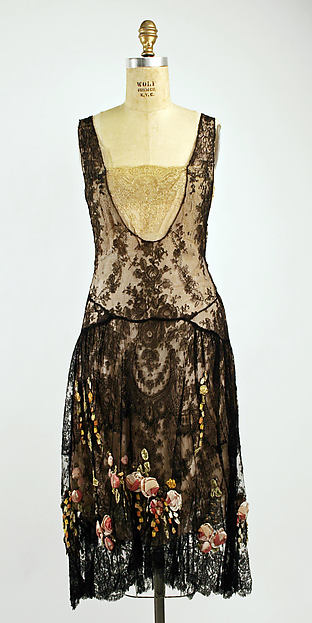 |
1920's
MET Museum |
 |
1920-25
MET Museum |
In New York, the label flourished despite some setbacks. In 1916, the sisters ran into some trouble with U.S. Customs & Immigration after importing a large number of dresses without paying the required taxes and attempting to bring French workers into the United States without proper identification. By July of that same year the charges were dropped after the sisters agreed to pay a $2500 fine and spend 24 hours in jail. Officials decided that an empty office was sufficiently jail-like for the sisters to spend their brief incarceration.
Later that year the sisters brought suit against a rival dress shop,
Hickson, Inc. for copying and counterfeiting the Boué Soeurs brand. According to court records the Plaintiffs alleged that their rival hired a young lady to represent herself as a private customer, buying gowns for her own personal use. The lady purchased gowns and a cape and then transferred them to the Defendant who removed the labels and then exhibited the Boué Soeurs dresses and copies of them as his own. They sought $25,000 in damages and requested that the court force Hickson to stop copying and selling their dresses, however the court found that once the dresses were purchased legally the court could not exert control on the outcome of the purchase (
Montegut v. Hickson, Inc.). Perhaps this incident is what Jeanne alluded to in her comment to
Arts and Decoration, "Many competitors have striven to imitate the Boué Soeurs productions but they have invariably failed and for a very simple reason- they have lacked the brains, the experience and artistic intuition which have made this house unique as an institution of supreme originality and superb artistry in dress."
 |
Portrait of Baronne Jeanne d'Etreillis and her
children, published in Les Modes in 1913 |
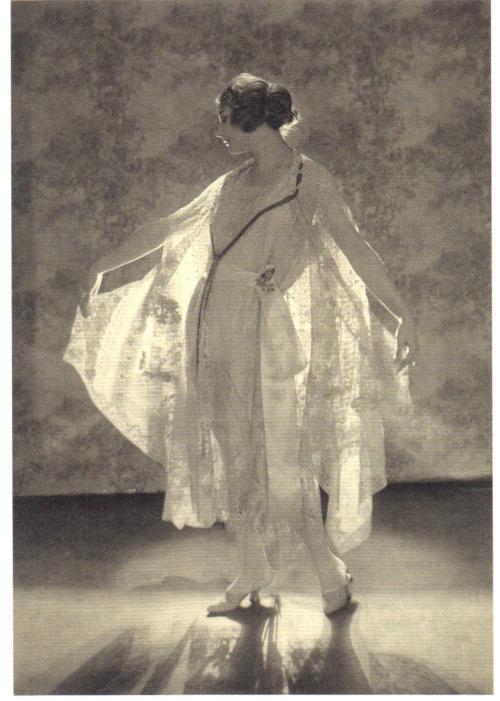 |
Model Helen Lyons wearing a dress and cape by
Boué Soeurs, photo by Baron Adolf de Meyer |
 |
| Patent for a jacket, Boué Soeurs, 1923 |
 |

The sisters were able to achieve a lightness and drape in textiles that became their signature and influenced many later designers. Jeanne bragged that their "artistic house" had created an organdy of the most "exquisite beauty" and linen "in which its texture and transparency a miracle", along with their infamous embroideries that often depicted whimsical scenes and even historical characters.
|
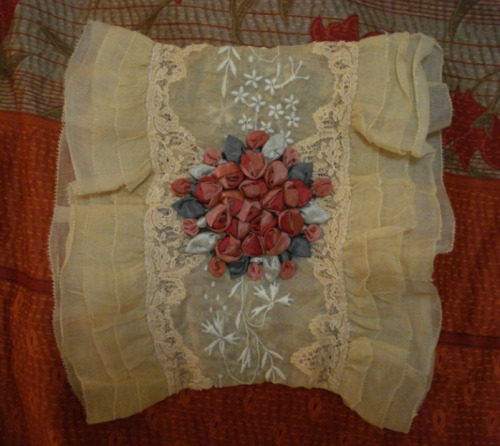 |
| Boué Soeurs Muff |
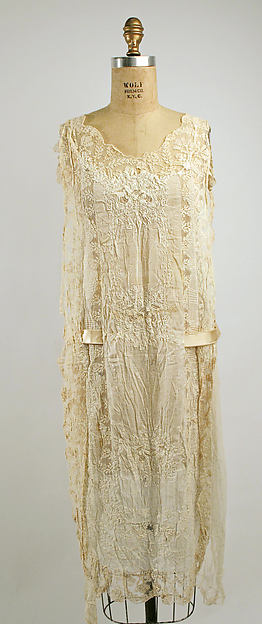 |
| 1915-1925 MET Museum |
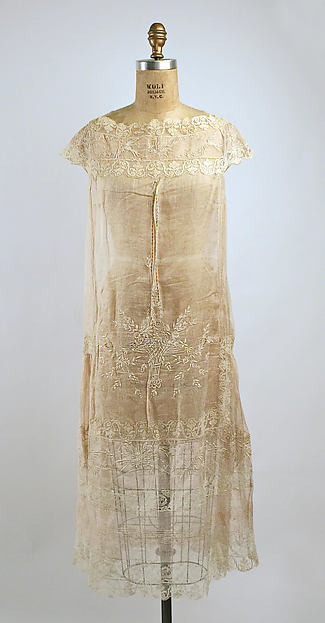 |
| 1925 - MET Museum |
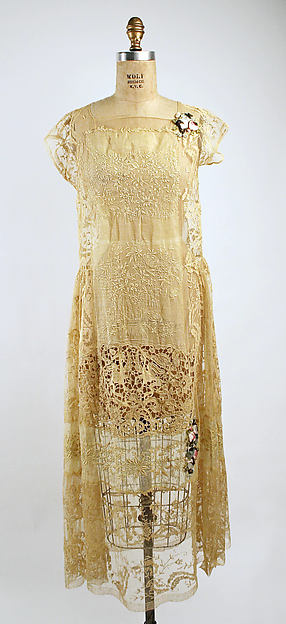 |
| 1927 Wedding Dress - MET Museum |
The Boué Souers New York store was the first French
haute couture store in the city and besides reaping the benefits of their unique design aesthetic, the sisters also took advantage of a particular niche in the U.S. market - lingerie. The New York branch made it easy for wealthy American women to purchase the much coveted styles of French lingerie. Only recently had stiff corsets been banished for the soft lines and comfort of brassieres (
patented by an American woman), silk slips and knickers. Lingerie was just another one of the new fashion experiments of the roaring 20's and the Boué sisters were determined to bring their aesthetic to underclothes as well as evening gowns.
 |
Camisole - early 1920's - MET museum
Below, left to right: pajamas - 1928, lingerie - 1927, negligée - 1929, MET |
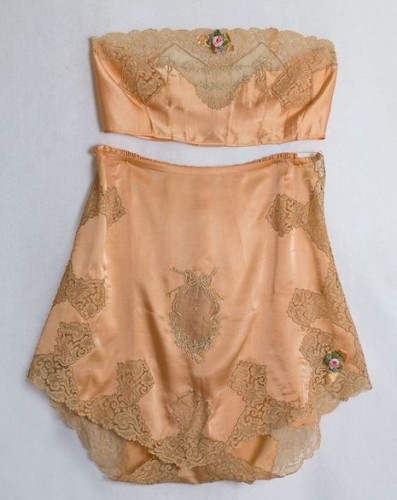 |
Tap Pants and Brassiere by Boué Soeurs, 1920's, Vintage Textiles
Read about "tap pants"courtesy of The Dreamstress |
As the 1920's passed by, Boué Soeurs altered styles to fit the prevailing modes while still maintaining their signature romantic aesthetic It seems as they moved into the 1930's the heyday of the brand remained in the previous decade. During the years of World War II the sisters closed the Paris branch, but kept the New York shop open. By this time their branch stores in other cities across the globe had closed or were on the brink of quitting business. In 1948, the sisters made a valiant effort to reopen the flagship Paris store, but it never regained its former glory and when the creative genius of Sylvie Montégut passed away in 1953, the gold shop letters were taken down for good. Jeanne maintained the New York store for another three years until illness forced her to close down for good, three months later she died at the age of 81 of congestive heart failure. Those last fading years of the Boué Soeurs label saw their clientele aging just as the brand's creators...the last dying embers of the New York shop was kept alive by a handful of loyal customers who couldn't let go of their beloved couture brand. The "breath of life and form of beauty" created by Sylvie and Jeanne in their unique designs could not live without them and with the death of the Boué sisters came the death of the beautifully artistic, romantic and ethereal label that shared their name and their life.
 |
| Advertisements from Theatre Magazine 1921 |
 |
| Court Presentation Ensemble (Robe de Style) - 1928 - MET Museum |
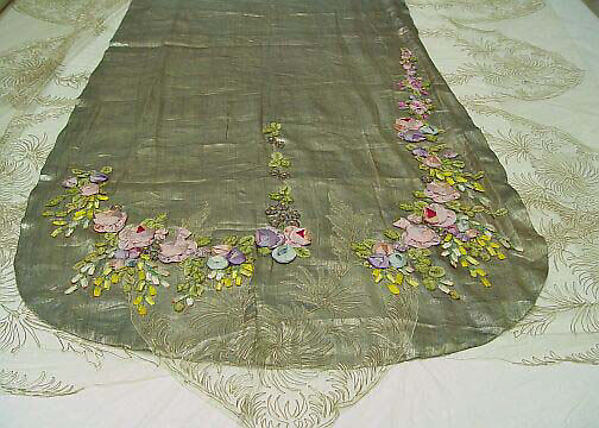 |
| Detail of train - Court Presentation Ensemble - 1928 - MET Museum |

